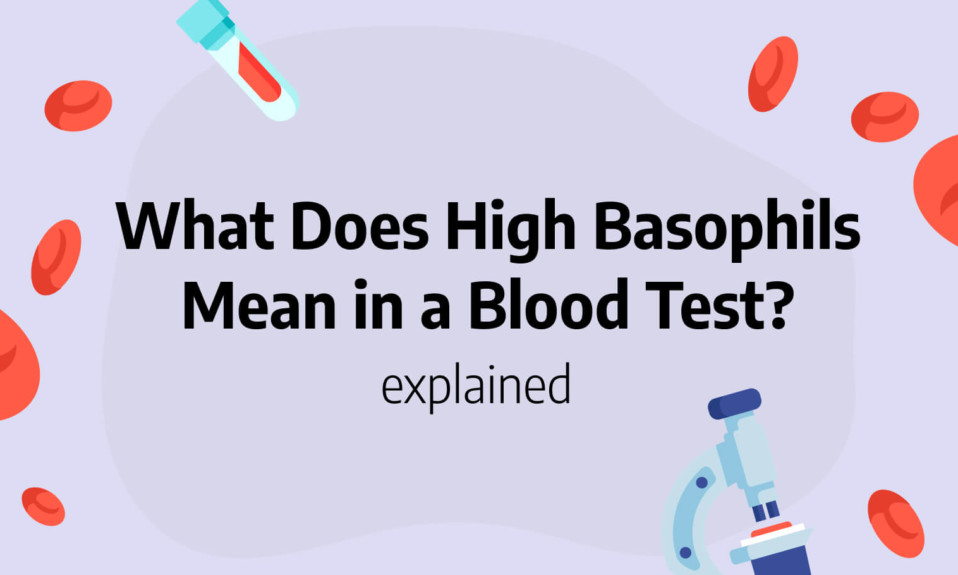If you’re struggling with seasonal allergies, you might want to consider adding purple dead nettle to your allergy-fighting arsenal.
This common plant has many properties that make it a great option for reducing inflammation and easing allergy symptoms.
In this article, we’ll explore how to use purple dead nettle to alleviate your allergy symptoms, and how it can help improve your overall health.
Keep reading to learn more!
- Purple dead nettle can be used as a natural remedy for seasonal allergy symptoms.
- The plant contains anti-inflammatory and antihistamine properties that can help alleviate symptoms such as sneezing, runny nose, and itchy eyes.
- The leaves and flowers of the plant can be used to make a tea or tincture, which can be consumed daily to help with allergy symptoms.
- Additionally, purple dead nettle can be used topically as a poultice or salve to reduce inflammation and itching associated with allergic reactions.
- It is important to consult with a healthcare provider before using purple dead nettle, especially if you are pregnant or taking medication.
Purple dead nettle: a natural allergy remedy
Purple dead nettle is a wild plant that is known for its medicinal properties.
It can be used as a natural remedy for allergies, thanks to the presence of flavonoids and other bioactive compounds in it.
The plant is also a rich source of vitamins and minerals, which make it a valuable addition to one’s diet.
The allergy season can be tough for many people, and the symptoms can range from mild to severe.
Common symptoms include sneezing, nasal congestion, runny nose, itchy eyes, and throat irritation.
While there are many over-the-counter and prescription medications available to relieve allergy symptoms, some people prefer to use natural remedies.
One of the most effective natural remedies for allergies is purple dead nettle.
The plant can be consumed in the form of tea, tincture, or capsules.
Purple dead nettle tea is easy to make and can be consumed regularly to prevent allergies.
To make the tea, simply steep a teaspoon of dried purple dead nettle leaves in hot water for 5-10 minutes.
You can add honey or lemon to the tea for added flavor.
In addition to consuming purple dead nettle, you can also use it topically to relieve allergy symptoms.
For example, you can make a poultice with the plant leaves and apply it to your forehead to relieve sinus pressure.
You can also make a nasal rinse by mixing purple dead nettle tincture with saline solution and using it to rinse your nasal passages.
In conclusion, if you’re looking for a natural way to relieve allergy symptoms, purple dead nettle is a great option.
It has been used for centuries as a medicinal herb and has shown to be effective in relieving allergy symptoms.
So, if you’re tired of relying on medications, give purple dead nettle a try and see the results for yourself!
Understanding the benefits of purple dead nettle for allergies
Purple dead nettle, also known as Lamium purpureum, is a herbaceous plant that can benefit those who suffer from allergies.
With its anti-inflammatory properties and immune-boosting effects, purple dead nettle can reduce the severity of allergy symptoms and improve overall health.
The plant contains a high concentration of flavonoids, which are powerful antioxidants that protect cells from damage caused by free radicals.
One of the main benefits of purple dead nettle for allergies is its ability to reduce inflammation in the body.
When pollen, dust or other allergens come into contact with our respiratory system, our immune system often overreacts, causing inflammation in the throat, nose and eyes.
The anti-inflammatory properties of purple dead nettle can help to alleviate these symptoms, reducing swelling and irritation and allowing the body to heal.
In addition to its anti-inflammatory properties, purple dead nettle can also boost the immune system.
The plant contains a wide variety of vitamins and minerals, including vitamin C, iron and magnesium, that can help to strengthen the body’s natural defences.
By enhancing the immune system, purple dead nettle can help to reduce the frequency and severity of allergy symptoms, allowing individuals to enjoy better overall health.
There are many ways to incorporate purple dead nettle into your diet.
The leaves and flowers of the plant can be used to make a soothing tea that is perfect for those suffering from seasonal allergies.
The tea can be sweetened with honey for added flavour, and can be enjoyed hot or cold.
Alternatively, you can add fresh purple dead nettle leaves to salads, soups or stews for a delicious and nutritious boost.
In conclusion, purple dead nettle is a valuable tool for those looking to reduce the severity of allergy symptoms and improve overall health.
With its anti-inflammatory and immune-boosting properties, the plant can provide relief for those suffering from seasonal allergies, while also promoting a stronger, healthier body.
So why not give purple dead nettle a try today and experience the benefits for yourself?
Preparing purple dead nettle for allergy relief
Purple dead nettle, also known as Lamium purpureum, is a plant that has been found to be effective in providing relief for allergy symptoms.
Its leaves and flowers contain antioxidants that help fight off inflammation in the body, which can be helpful in relieving allergy symptoms such as coughing, sneezing, and runny nose.
Preparing purple dead nettle for allergy relief can be done in several ways.
One popular method is to make a tea out of the dried leaves and flowers of the plant.
To do so, simply steep a handful of the dried leaves and flowers in hot water for several minutes, strain out the plant matter, and drink the resulting tea.
This can be done several times a day to help relieve allergy symptoms.
Another way to prepare purple dead nettle for allergy relief is to use it in a steam inhalation.
This can be especially helpful for sinus-related allergy symptoms.
To do so, steep a handful of fresh or dried leaves and flowers in a pot of boiling water for several minutes.
Remove the pot from the heat and place it on a stable surface such as a table.
Cover your head with a towel and lean over the pot, inhaling the steam for several minutes.
Be careful not to get too close to the pot to avoid burning your face or nose.
Finally, purple dead nettle can also be used in a tincture.
A tincture is made by steeping the plant matter in alcohol for several weeks, which extracts the medicinal compounds from the plant.
This tincture can then be taken orally by adding a few drops to a glass of water or juice.
Be sure to follow instructions for the specific tincture you are using to ensure proper dosages.
In conclusion, purple dead nettle can be a helpful natural remedy for allergy relief.
Whether consumed as a tea, used in a steam inhalation, or taken as a tincture, its anti-inflammatory properties can help alleviate allergy symptoms.
Be sure to properly prepare and use the plant according to instructions to ensure its effectiveness and safety.
Incorporating purple dead nettle into your allergy management plan
can be a game changer for many allergy sufferers.
This naturally growing plant can be found in the wild and is known for its medicinal benefits.
Purple dead nettle is rich in Vitamin C, which is known for strengthening the immune system and reducing inflammation.
Adding it to your daily routine can help reduce symptoms associated with allergies, such as sneezing, runny nose, and itchy eyes.
One way to incorporate this plant into your allergy management plan is by making a tea out of it.
Adding honey to the tea can also provide additional relief for sore throats.
Another way to consume purple dead nettle is by adding it to smoothies.
This way, you can get the benefits of this plant while enjoying a tasty treat.
For those who are allergic to pollen, it is recommended to consume the plant in a cooked form, such as adding it to soups or stews.
Purple dead nettle is also easy to grow in your own backyard.
This way, you can have a fresh supply at your disposal.
Beginners can start by planting the seeds in moist soil and watering them regularly.
Once the plant has grown, you can simply cut the leaves and add them to your meals or teas.
It is important to note that this plant can cause mild skin irritation, so wearing gloves while handling it is recommended.
In conclusion, incorporating purple dead nettle into your allergy management plan can provide real relief for allergy sufferers.
Whether you choose to consume it in a tea or smoothie, or grow it in your backyard, this plant is a natural and effective way to combat allergy symptoms.
And with its easy-to-grow nature, it’s a practical addition to any allergy management plan.
You’ll also like: How To Improve Gum Health
How To Use Purple Dead Nettle For Allergies
Purple dead nettle, also known as Lamium Purpureum, is a wild plant that is commonly found in the Mediterranean region.
It has been used for centuries to treat various health conditions, including allergies.
The plant contains compounds that have anti-inflammatory properties, and this makes it an effective natural remedy for allergies.
To use purple dead nettle for allergies, you can follow the steps below:
- Pick leaves and flowers of the Purple Dead Nettle plant and wash them thoroughly.
- Boil the leaves and flowers in water for 10-15 minutes.
- Strain the mixture and let it cool before drinking.
- Drink the mixture once or twice a day.In addition to making a tea from purple dead nettle, you can also use the plant in other ways to treat allergies.
For example, you can make an infusion by steeping dried purple dead nettle in hot water for several minutes.
Another way to enjoy the benefits of this plant is by adding it to your food.
You can use the plant as a garnish or add it to soups and stews for a unique flavor.
While purple dead nettle is generally considered safe for most people, it is always best to consult with a healthcare professional before using it as a treatment for allergies.
Some people may have an allergic reaction to the plant, and it may interact with certain medications.
In conclusion, purple dead nettle is a natural remedy that can be used to treat allergies.
It contains compounds that have anti-inflammatory properties, making it an effective treatment for allergy symptoms.
By following the steps above, you can prepare a tea or infusion from the plant and enjoy its benefits.
As with any natural remedy, it is important to use it responsibly and under the guidance of a healthcare professional.
You’ll also like: What Can An Individual Do To Further Public Health
The science behind purple dead nettle’s effectiveness in treating allergies
Purple dead nettle has been long known for its remarkable ability to treat allergic reactions.
Research has shown that the purple dead nettle plant contains flavonoids and tannins that work together to help reduce inflammation and histamine release in the body.
Histamine is a compound that is produced by the body’s immune system in response to allergens.
When histamine levels in the body increase, it can lead to typical allergy symptoms—sneezing, itchy eyes, and runny nose.
This is where the purple dead nettle comes into play.
The flavonoids present in purple dead nettle have antioxidant properties that help neutralize free radicals, which can damage cells and increase inflammation in the body.
Additionally, the tannins present in the plant act as astringents, helping to reduce inflammation and help improve overall immunity.
This, in turn, can help minimize the effects of an allergic reaction in the body.
Recent studies have discovered that purple dead nettle is capable of inhibiting an enzyme called cyclooxygenase-2 (COX-2), which is responsible for producing prostaglandins.
- The best way to reap the benefits of purple dead nettle is by consuming it in tea form, as it’s hard to find supplements of this plant.Drinking tea regularly can help reduce the allergy symptoms we mentioned above, such as itchy eyes and runny nose, and even help clear up a congested chest.
On the other hand, there are some groups of people who should be cautious when consuming purple dead nettle.
For those with a history of blood clotting disorders, it’s necessary to consult their doctor before taking the plant.
Pregnant women should also avoid using purple dead nettle until they’ve discussed the risks and benefits with their professional healthcare provider.
In conclusion, purple dead nettle’s scientific effectiveness in treating allergies is strong.
Its flavonoids and tannins properties can significantly minimize inflammation and histamine levels in the body, two compounds that lead to the classic allergic reaction.
Drinking purple dead nettle tea regularly is among the best approaches to leveraging its benefits.
However, like any other natural remedy, it’s generally recommended to consult a healthcare provider before using it, especially in cases where there may be an existing blood clotting condition, or if pregnant.
You’ll also like:










